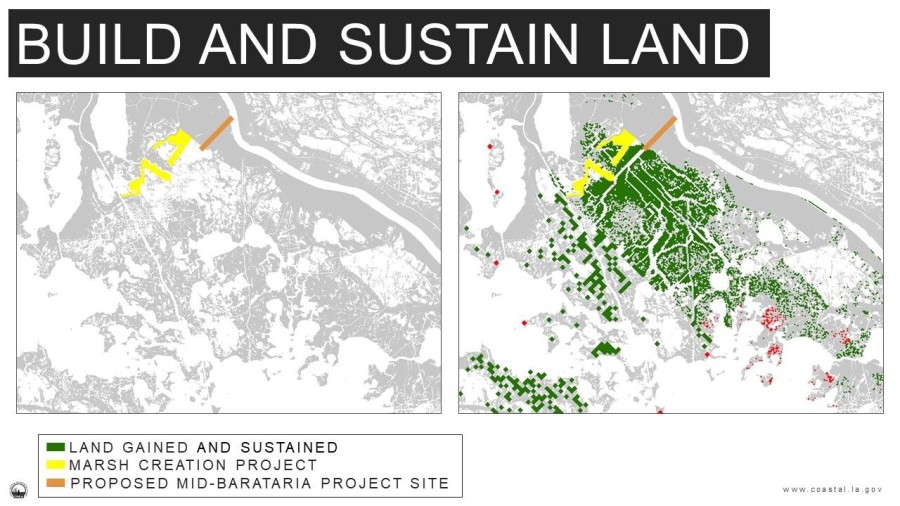Sign Up. Stay Informed.
- Overview
- Project Benefits
- Funding
- Sediment Diversions
- Timeline
- Resources / Get Involved
- Community Outreach
Project Benefits

Sediment diversions have the capability to build tens of thousands of acres of land along our state’s coast. Latest modeling results show that, on average, a sediment diversion will deliver between 2-3 million cubic yards of sediment a year, providing sustainability and increased storm surge protection for coastal communities.
As outlined in the Coastal Master Plan, CPRA has developed a holistic approach to coastal protection and restoration for our state – including diversions, dredging, and a complementary suite of projects.


Since 2008, CPRA has dredged nearly 30 million cubic yards of material from Mississippi River borrow sites to create, restore, and nourish nearly 4,000 acres of marsh, barrier island, and ridge habitat.
These dredging projects provide critical short-term benefits but cannot solve our state’s fundamental land loss issue alone because they do not have capability to collect silts and clays suspended in the river water, which are critical to building sustainable land. A diversion, on the other hand, is specifically designed with the purpose of doing just that – to capture this floating sediment and deposit it into depleting areas.
Sediment diversions have the potential to create tens of thousands of acres of land, as opposed to dredging projects that only create hundreds of acres.
Latest modeling research show that, when implemented together, marsh creation and sediment diversion projects are a complementary system, yielding better results for a longer period than they would individually. As such, CPRA has dedicated $18 billion to marsh creation projects and plans to dredge as much as 55-65 million cubic yards of material over the next 15 years.

